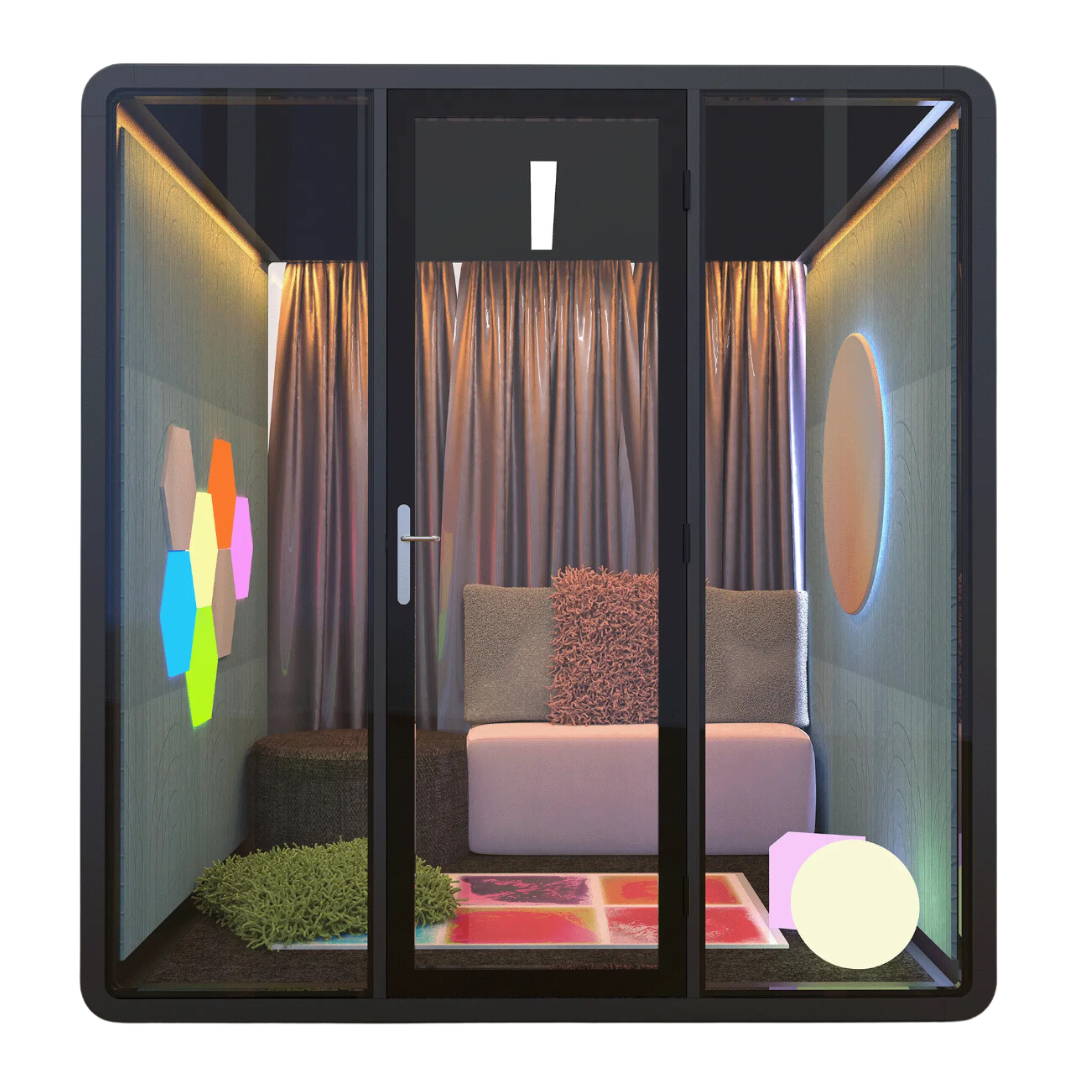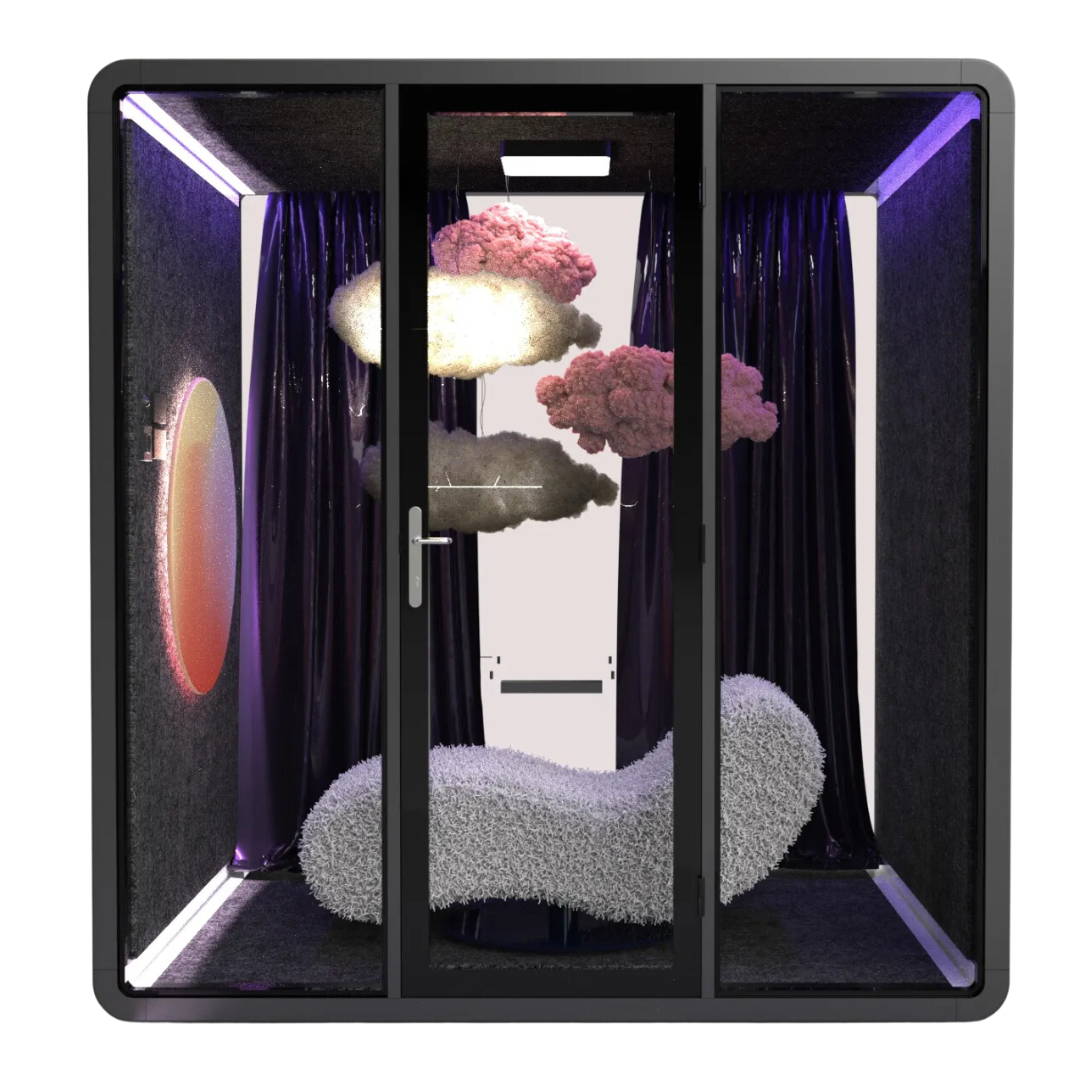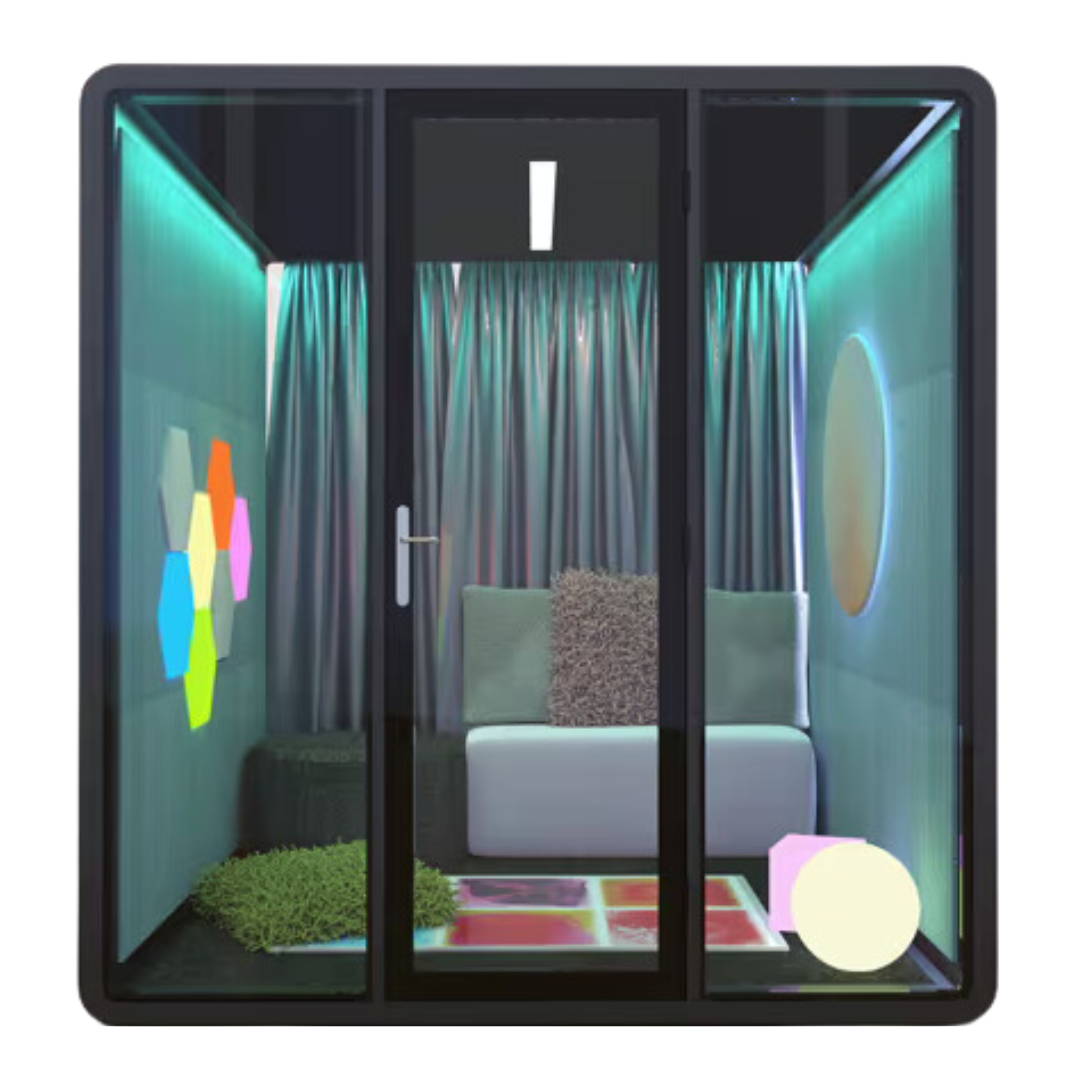Start with impeccable acoustic insulation. Ensure that the pod's walls are designed to provide top-notch soundproofing, creating a quiet and calming atmosphere.
Sensory
Sensory Rooms in Acoustic Pods:
Creating Calm Spaces
Enhancing Spaces for Sensory Sensitivities: The Power of Sensory Rooms
Our Sensory Booth is designed to provide a calming and supportive environment for individuals with sensory sensitivities, including neurodivergent individuals. Leveraging research on sensory environments, our Booth combines these principles with modern design to offer a space that helps individuals relax, self-regulate, and find comfort.
Designing Sensory Rooms In Acoustic Pods
Designing a sensory room within an acoustic pod is a nuanced and deliberate process.
Here's how you can tailor a space specifically to meet the sensory needs of neurodiverse individuals, ensuring an environment that is both nurturing and effective.
1. Acoustic Insulation
2. Soundproofing Materials
Incorporate sound-absorbing materials like foam panels or acoustic curtains. These materials will minimise sound reflections and further reduce sensory stimulation.
3. Dimmable Lighting
Install adjustable, dimmable LED lighting to allow occupants to control the brightness based on their comfort level, reducing the potential for sensory discomfort.
4. Comfortable Seating
Provide cozy, ergonomic seating options such as plush chairs or bean bags. Comfortable seating is essential for relaxation and self-regulation.
5. Sensory-Friendly Decor
Keep the decor minimal and unobtrusive. Use soft, calming colours and natural textures like wood or fabric to create a soothing environment.
6. Sensory Tools
Offer a variety of sensory tools, such as weighted blankets, fidget toys, or noise-canceling headphones, to cater to individual sensory preferences.
7. Nature Elements
Consider incorporating elements of nature, such as potted plants or nature-themed artwork. Nature has a calming effect and can create a serene atmosphere.
8. Personalisation
Allow for personalisation by enabling individuals to control the sensory room environment. Features like temperature control or a white noise machine can provide a sense of agency.
General Sensory Room Requirements
Benefits of Sensory Rooms

Stress Reduction
A quiet, soothing atmosphere aids in stress reduction, anxiety management, and emotional well-being.

Enhanced Focus and Learning
The low-sensory environment promotes concentration and enhances learning experiences.

Sensory Exploration and Regulation
Our sensory rooms provide a safe space for children to explore their senses and self-regulate.

Comfort and Play
Promoting mental well-being, self-care, and comfort for kids during their play and learning activities.

Designing for Sensory Comfort
Our sensory rooms provide a safe space for individuals to explore their senses and self-regulate.
Peaceful Sanctuary
Start with impeccable acoustic insulation. Ensure that the pod's walls are designed to provide top-notch soundproofing, creating a quiet and calming atmosphere.
Sensory-Friendly Lighting
Adjustable, dimmable LED lighting ensures a customisable visual experience, empowering kids to set the brightness to their liking.
Cozy and Inviting Seating
Plush, ergonomic seating options provide a comfortable and cozy space for learning, relaxation, and play.
Sensory-Aware Decor
Our decor features soft, calming colours and natural textures like wood or fabric, reducing sensory distractions and promoting focus.
Harmonising Comfort And Learning
Unlock the potential of our sensory rooms within acoustic pods to create inclusive, supportive spaces for neurodivergent individuals. Experience the serenity of tranquil spaces—where comfort and sensory support unite to enhance the lives of the youngest members of our community. Interested in learning more or seeing these spaces in person? Enquire now to discover how we can help you create a nurturing environment for every child.









